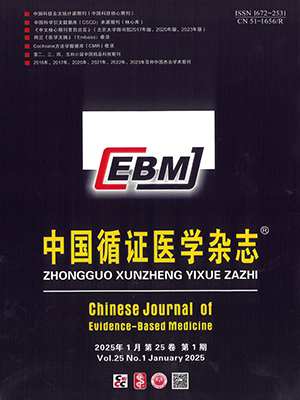| 1. |
International Diabetes Federation. IDF Diabetes Atlas. 9th edition 2019. Available at: http://www.diabetesatlas.org.
|
| 2. |
毕超然, 朴春丽. 中医药治疗糖尿病肾病的研究进展. 中西医结合心血管病电子杂志, 2019, 7(27): 79-80.
|
| 3. |
中华医学会肾脏病学分会专家组. 糖尿病肾脏疾病临床诊疗中国指南. 中华肾脏病杂志, 2021, 37(3): 255-304.
|
| 4. |
中华中医药学会. 糖尿病肾病中医防治指南. 中国中医药现代远程教育, 2011, 9(4): 151-153.
|
| 5. |
王莹芳. 加味参芪地黄汤治疗气阴两虚型2型糖尿病肾病的临床观察. 武汉: 湖北中医药大学, 2017.
|
| 6. |
郑亚军, 穆宝妮. 参芪地黄汤治疗早期气阴两虚型糖尿病肾病的效果. 临床医学研究与实践, 2019, 4(20): 98-99.
|
| 7. |
蔡春沉, 王洪玺, 王肃. 地黄多糖对肥胖糖尿病大鼠模型的治疗作用及对血清中GLP-1、GIP水平的影响. 中国老年学杂志, 2013, 33(18): 4506-4507.
|
| 8. |
麻锐, 丁瑞恒, 廖蕴华. 不同浓度地黄对大鼠肾组织抗氧化作用的研究. 内科, 2012, 7(3): 220-223.
|
| 9. |
赵素霞, 王娟娟, 张振凌, 等. 地黄叶与桑叶降血糖作用研究. 中医学报, 2015, 30(10): 1411-1413.
|
| 10. |
沈欣, 李德凤, 宗桂珍, 等. 地黄叶总苷对兔IgG加速型大鼠肾毒血清肾炎的作用研究. 中国实验方剂学杂志, 2010, 16(8): 179-181.
|
| 11. |
Dai X, Su S, Cai H, et al. Protective effects of total glycoside from rehmannia glutinosa leaves on diabetic nephropathy rats via regulating the metabolic profiling and modulating the TGF-β1 and Wnt/β-catenin signaling pathway. Front Pharmacol, 2018, 9: 1012.
|
| 12. |
贾振武. 地黄叶总苷胶囊联合氯沙坦钾片治疗早期糖尿病肾病的疗效观察. 中国医药指南, 2014, (12): 263-264.
|
| 13. |
白晓丽, 刘越素. 地黄叶总苷联合厄贝沙坦治疗早期糖尿病肾病蛋白尿的疗效观察. 临床医药实践, 2017, 26(4): 278-280.
|
| 14. |
薛福平, 袁慧欣, 郭丽君, 等. 坎地沙坦脂联合地黄叶总苷治疗早期糖尿病肾病疗效观察. 武警医学, 2013, 24(10): 857-859.
|
| 15. |
刘俊平, 梁芳. 地黄叶总苷联合替米沙坦对糖尿病肾病患者蛋白尿的影响. 中国现代医生, 2019, 57(30): 96-99.
|
| 16. |
李德功. 地黄叶总苷胶囊联合胰激肽原酶片治疗糖尿病肾病68例. 光明中医, 2014, (8): 1715-1716.
|
| 17. |
龙海燕, 白灵, 王苹, 等. 地黄叶总苷胶囊联合胰激肽原酶片治疗糖尿病肾病54例. 光明中医, 2013, 28(1): 54-56.
|
| 18. |
刘高虹, 薛福平, 张湾, 等. 地黄叶总苷胶囊辅助治疗糖尿病肾病疗效观察. 中国中西医结合肾病杂志, 2018, 19(11): 990-992.
|
| 19. |
韦道明, 朱雪红, 郑士荣, 等. 糖尿病肾病大鼠糖代谢调节激素改变及六味地黄丸对其的影响. 深圳中西医结合杂志, 2012, 22(6): 333-335, 345.
|
| 20. |
刘朝菊. 六味地黄丸辅治2型糖尿病肾病疗效观察. 实用中医药杂志, 2012, 28(10): 850-851.
|
| 21. |
夏中尚, 杜正彩, 侯小涛, 等. 基于755首中药处方治疗糖尿病用药规律的研究. 中草药, 2018, 49(3): 739-744.
|
| 22. |
戴新新. 地黄叶资源化学评价及其总苷对糖尿病肾损伤的改善作用与机制研究. 南京: 南京中医药大学, 2018.
|
| 23. |
沈欣, 李德凤, 宗桂珍, 等. 地黄叶总苷对大鼠C-BSA肾炎的作用研究. 中国实验方剂学杂志, 2010, 16(13): 167-169.
|
| 24. |
范经絮. 地黄叶总苷对慢性肾炎的疗效分析. 中国现代药物应用, 2016, 10(16): 275-276.
|
| 25. |
潘丽萍. 地黄叶总苷对慢性肾小球肾炎患者的疗效分析. 医学信息, 2013, 26(30): 160-161.
|




